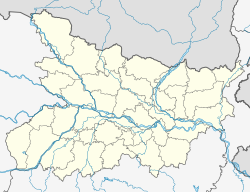Sursand | |
|---|---|
Town | |
 An ancient temple locally known as Choraut Mandir in Sursand | |
| Coordinates: 26°39′0″N85°43′0″E / 26.65000°N 85.71667°E | |
| Country | |
| State | Bihar |
| Region | Mithila |
| District | Sitamarhi |
| Government | |
| • Type | Nagar Panchayat |
| Elevation | 55 m (180 ft) |
| Population (2011) | |
• Total | 29,688 |
| Languages | |
| • Official | Maithili, Hindi |
| Time zone | UTC+5:30 (IST) |
| Vehicle registration | BR-30 |
| Coastline | 0 kilometres (0 mi) |
Sursand or Sursand Raj is an Indian town in the Mithila region of Bihar near the Indo-Nepal border. It is about 25 kilometres away from Sitamarhi, the district headquarters, and approximately 5 kilometers away from Bhitthamore. [2]



